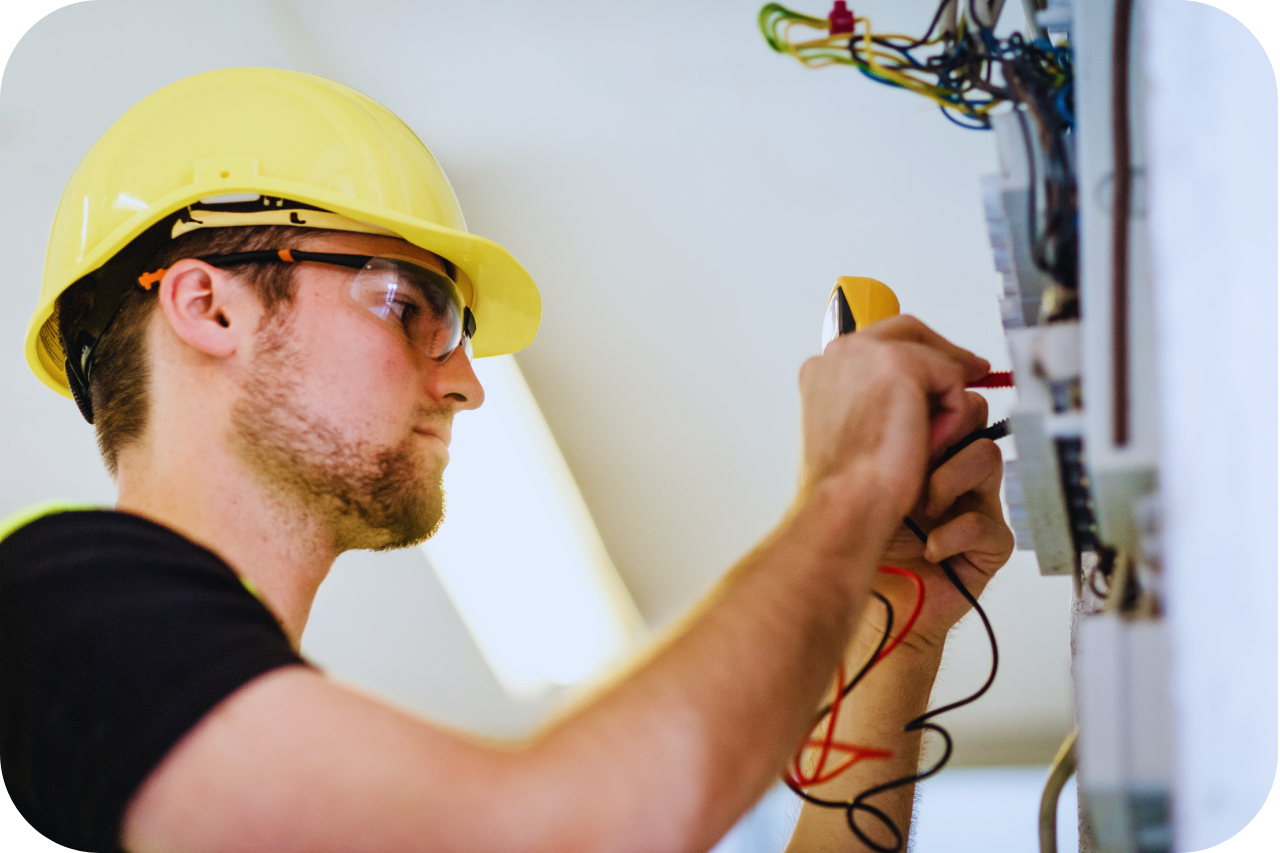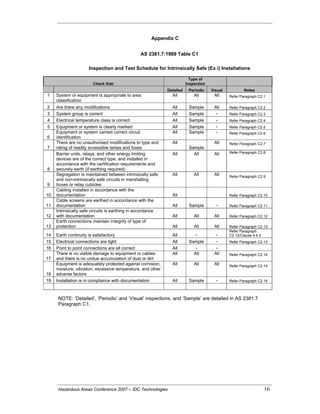Roar Solutions - The Facts
Roar Solutions - The Facts
Blog Article
Indicators on Roar Solutions You Should Know
Table of ContentsUnknown Facts About Roar SolutionsHow Roar Solutions can Save You Time, Stress, and Money.Getting The Roar Solutions To Work
In order to shield installations from a prospective surge a method of evaluating and categorizing a potentially dangerous location is required. The objective of this is to make certain the correct choice and installment of equipment to ultimately avoid a surge and to make sure security of life.
(https://www.provenexpert.com/roar-solutions/)
No equipment should be installed where the surface temperature of the equipment is more than the ignition temperature of the provided threat. Below are some typical dust hazardous and their minimal ignition temperature level. Coal Dust 380C 225C Polythene 420C (melts) Methyl Cellulose 420C 320C Starch 460C 435C Flour 490C 340C Sugar 490C 460C Grain Dust 510C 300C Phenolic Resin 530C > 450C Aluminium 590C > 450C PVC 700C > 450C Residue 810C 570C The possibility of the threat existing in a focus high adequate to trigger an ignition will certainly vary from area to place.
In order to categorize this threat an installment is split right into areas of danger depending upon the amount of time the unsafe exists. These areas are described as Areas. For gases and vapours and dusts and fibers there are three areas. Zone 0 Zone 20 A hazardous environment is extremely likely to be existing and might be present for extended periods of time (> 1000 hours per year) and even continuously Area 1 Zone 21 A dangerous atmosphere is possible however not likely to be existing for long periods of time (> 10 450 C [842 F] A category of T6 implies the minimum ignition temperature is > 85 C [185 F] Harmful location electric equipment possibly created for use in higher ambient temperature levels. This would showed on the score plate e.g. EExe II C T3 Ta + 60C( This means at 60C ambient T3 will not be gone beyond) T1 T1, T2, T3, T4, T5, T6 T2 T2, T3, T4, T5, T6 T3 T3, T4, T5, T6 T4 T4, T5, T6 T5 T5, T6 T6 T6 A T Class ranking of T1 suggests the optimum surface area temperature generated by the instrument at 40 C is 450 C. Presuming the connected T Class and Temperature level rating for the equipment are ideal for the area, you can constantly utilize a tool with a much more stringent Division ranking than needed for the area. There isn't a clear response to this concern. It actually does depend on the sort of equipment and what repair services need to be performed. Devices with certain examination procedures that can't be performed in the area in order to achieve/maintain 3rd party ranking. Should come back to the factory if it is prior to the devices's solution. Area Fixing By Authorised Personnel: Complex screening might not be called for nevertheless particular treatments might need to be adhered to in order for the tools to preserve its third party rating. Authorized workers should be used to carry out the work appropriately Repair service should be a like for like replacement. New part need to be thought about as a straight replacement needing no unique screening of the devices after the repair is total. Each tool with a harmful score must be evaluated independently. These are described at a high degree listed below, however for even more thorough information, please refer directly to the standards.
Get This Report on Roar Solutions
The devices register is a detailed database of equipment records that consists of a minimum collection of fields to identify each product's location, technical specifications, Ex classification, age, and ecological information. This details is critical for tracking and taking care of the devices successfully within unsafe areas. On the other hand, for periodic or RBI tasting assessments, the quality will be a combination of In-depth and Close assessments. The proportion of Detailed to Close inspections will be identified by the Tools Risk, which is examined based upon ignition threat (the likelihood of a source of ignition versus the likelihood of a combustible atmosphere )and the unsafe area category
( Area 0, 1, or 2). This variant will certainly additionally influence the resourcing requirements for work preparation. When Whole lots are specified, you can develop sampling plans based on the sample dimension of each Lot, which describes the variety of arbitrary equipment things to be checked. To figure out the called for sample size, two facets require to be reviewed: the size of the Great deal and the classification of evaluation, which indicates the level of initiative that need to be applied( reduced, typical, or boosted )to the assessment of the Lot. By combining the group of inspection with the Great deal size, you can after that develop the appropriate rejection requirements for a sample, meaning the allowed variety of malfunctioning things found within that example. For even more information on this procedure, please refer to the Power Institute Standards. The IEC 60079 typical suggests that the optimum period in between assessments should not go beyond 3 years. EEHA examinations will likewise be performed beyond RBI campaigns as component of arranged upkeep and devices overhauls or repair work. These evaluations can be attributed towards the RBI sample sizes within the affected Great deals. EEHA inspections are conducted to recognize mistakes in electric equipment. A heavy scoring system is necessary, as a single item of equipment might have several mistakes, each with varying degrees of ignition risk. If the combined score of both inspections is less than twice the fault rating, the Whole lot is deemed acceptable. If the Lot is still considered inappropriate, it has to undergo a complete assessment or justification, which may trigger stricter inspection protocols. Accepted Lot: The causes of any kind of faults are determined. If a typical failing setting is found, extra devices might call for maintenance. Faults are classified by severity( Security, Stability, Home cleaning ), making certain that immediate problems are assessed and dealt with without delay to alleviate any effect on safety or procedures. The EEHA database should track and videotape the lifecycle of faults in addition to the restorative actions taken. Implementing a durable Risk-Based Inspection( RBI )technique is critical for ensuring compliance and safety in managing Electric Tools in Hazardous Locations( EEHA) (eeha). Automated Mistake Rating and Lifecycle Management: Effortlessly take care of mistakes and track their lifecycle to boost assessment accuracy. The introduction of this support for risk-based inspection additionally strengthens Inspectivity's placement as a best-in-class option for regulatory compliance, along with for any asset-centric inspection use instance. If you have an interest visit site in discovering extra, we invite you to request a demo and discover just how our remedy can change your EEHA administration processes.
Indicators on Roar Solutions You Should Know

In regards to eruptive danger, an unsafe area is an environment in which an eruptive ambience exists (or may be anticipated to be present) in quantities that require unique safety measures for the construction, setup and usage of equipment. eeha certificate. In this post we check out the challenges dealt with in the office, the risk control measures, and the called for proficiencies to function safely
These materials can, in particular conditions, develop explosive environments and these can have significant and unfortunate consequences. Most of us are acquainted with the fire triangle eliminate any one of the three elements and the fire can not take place, but what does this mean in the context of unsafe locations?
In the majority of instances, we can do little about the levels of oxygen in the air, but we can have significant influence on sources of ignition, as an example electric devices. Harmful locations are documented on the dangerous location category drawing and are recognized on-site by the triangular "EX-SPOUSE" sign. Below, among various other crucial information, areas are divided right into three types relying on the threat, the probability and period that an explosive atmosphere will exist; Zone 0 or 20 is deemed the most dangerous and Area 2 or 22 is regarded the least.
Report this page